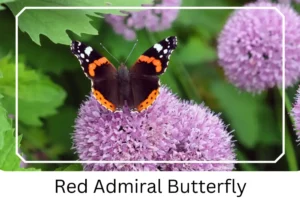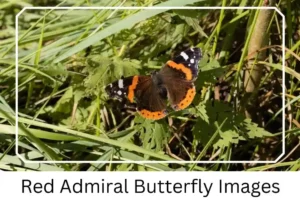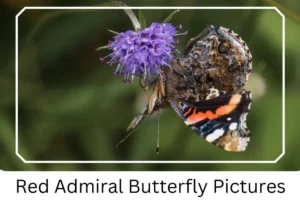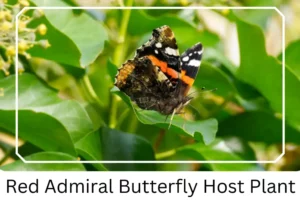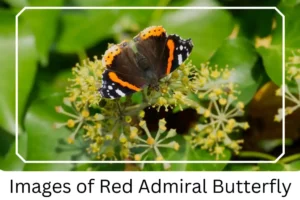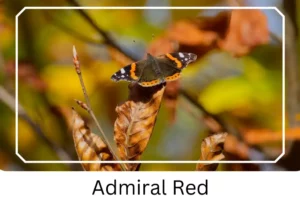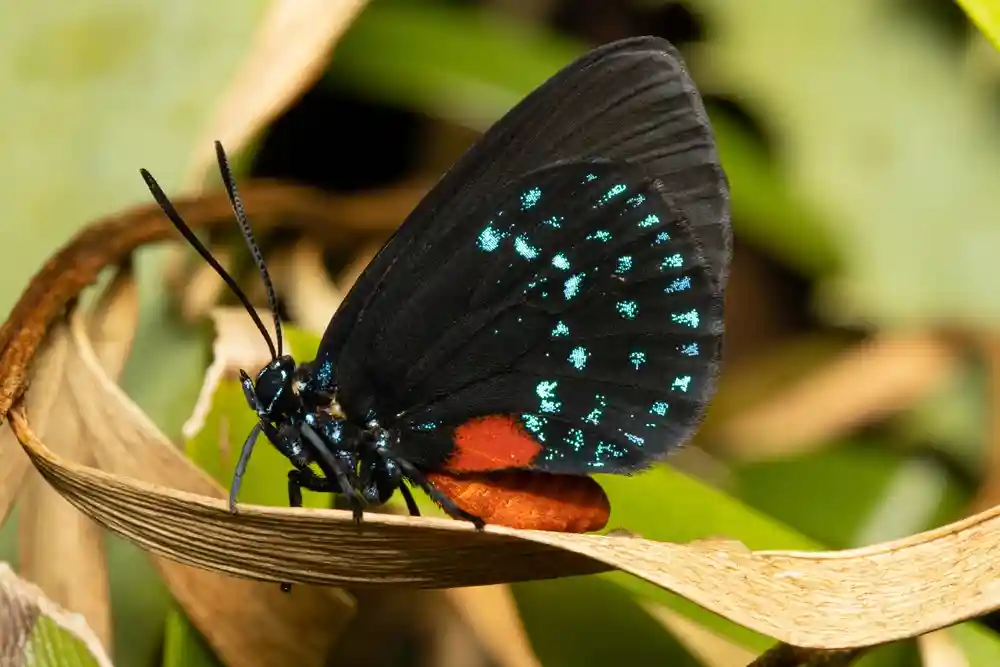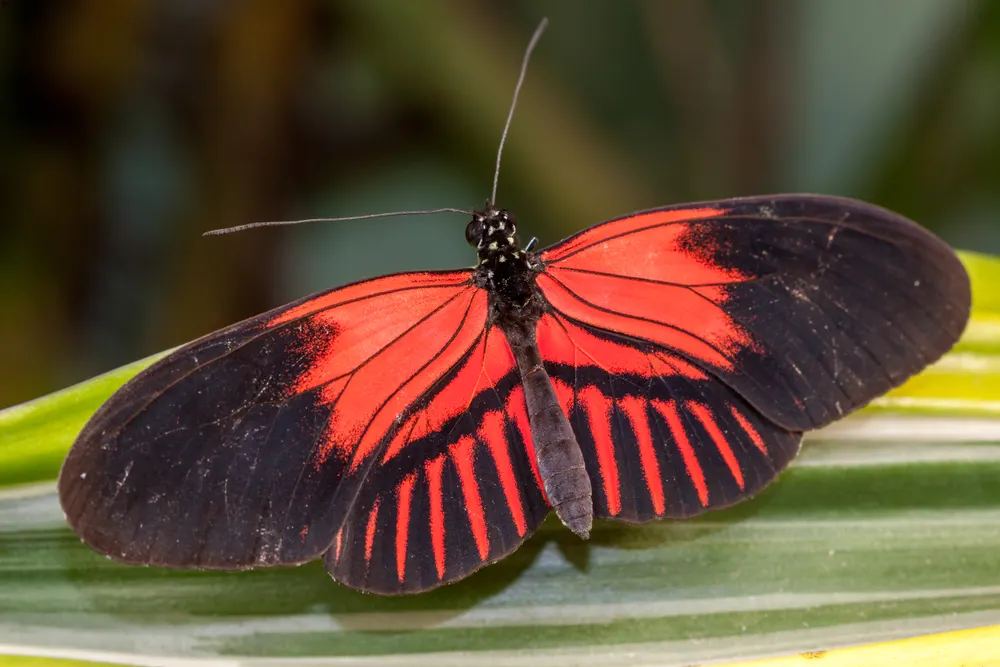Red Admiral (Vanessa atalanta)
The Red Admiral (Vanessa atalanta), once known as the red admirable, stands out as a distinctly medium-sized butterfly species, indigenous to a broad geographical expanse that includes the temperate parts of North Africa, Europe, the Americas, the Caribbean islands, and Asia. Exhibiting a fascinating migratory pattern, these butterflies venture northward during the spring and autumn, thriving predominantly in warmer regions yet demonstrating remarkable adaptability to various climates.
Scientific Classification
- Family: Nymphalidae
- Genus: Vanessa
- Scientific Name: Vanessa atalanta
Overview
This vibrant species is celebrated for its striking appearance and intriguing behaviors, which have captivated enthusiasts and researchers alike. The Red Admiral’s lifecycle, habitat preferences, and dietary habits offer a window into the complex interplay between species and their environments, underscoring the importance of biodiversity and ecosystem health. Through a detailed examination of its characteristics and significance, we gain insights into the broader natural world and the intricate connections that sustain it.
Description and Identification
Caterpillar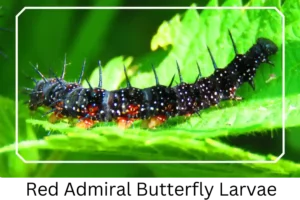
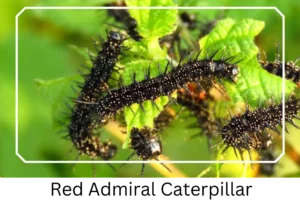
The larval stage of the Red Admiral presents a striking visual with a predominantly black body, adorned with light yellow or white speckles. This distinctive patterning not only serves as a means of identification but also plays a role in deterring predators.
Pupa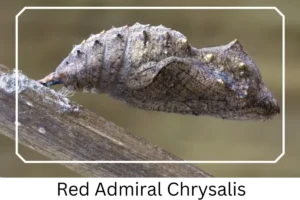
Transitioning into the pupal stage, the Red Admiral exhibits a remarkable color shift. The chrysalis color ranges from bright scarlet to black, influenced by the surrounding temperatures. This adaptive coloration reflects the species’ resilience and ability to thrive across seasons.
Adult Butterfly
Sexual Dimorphism: Sexual dimorphism is present within the species, with males and females showcasing differences in size and, occasionally, coloration, which aids in mate selection and reproductive success.
Color and Appearance: Upon maturation, the adult Red Admiral boasts an impressive wingspan and distinct coloration. The dorsal part of the forewings and the outer surface of the hind wings display vibrant orange bands, complemented by white spots at the distal points of the forewings. The ventral side features a complex pattern of brown, black, red, and white patches, with a marbled pattern covering the entire hind wing.
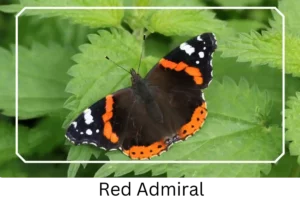
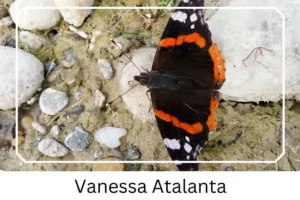 Average Wingspan: The wingspan of the Red Admiral ranges from 4.4 to 6.4 cm (1.75 to 2.50 inches), positioning it within the medium size spectrum of butterfly species.
Average Wingspan: The wingspan of the Red Admiral ranges from 4.4 to 6.4 cm (1.75 to 2.50 inches), positioning it within the medium size spectrum of butterfly species.
Flight Pattern: The flight pattern of the Red Admiral is characterized by a combination of steadiness and erratic movements, with males displaying a higher proficiency in flight agility compared to females.
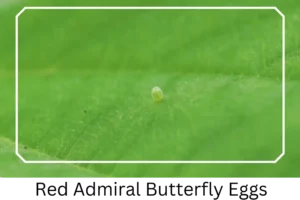
Red Admiral Butterfly Eggs
Eggs
The reproductive cycle of the Red Admiral begins with the laying of round, pale green eggs on host plants such as false nettle. The emerging larvae feature a distinctive black body with white spots, signaling the start of their journey to adulthood.
Quick Facts | |
| Distribution | Spanning continents, the Red Admiral is found in North Africa, Asia, Europe, North and Central America, the Caribbean, and Hawaiian islands. |
| Habitat | This species thrives in a variety of settings including parks, marshes, yards, moist fields, and woods. |
| Lifespan of Adults | The adult Red Admiral typically lives for about two weeks. |
| Host Plants | It favors stinging nettle, false nettle, and plants from the Cannabaceae and Compositae families for laying eggs. |
| Adult Diet | A diverse diet includes sap, bird droppings, fermenting fruits, and nectar from plants like milkweed and aster. |
How to Identify Red Admiral Butterfly?
Identifying the Red Admiral butterfly involves observing several key characteristics that distinguish it from other species. Look for the unique color patterns on both the dorsal and ventral sides of the wings; the vibrant orange bands and white spots on the dorsal side are particularly striking. The eggs are another indicator, being round and pale green, typically found on specific host plants like false nettle. Additionally, the caterpillar stage is notable for its black body with light yellow or white speckles. Paying attention to these details, along with the butterfly’s preferred habitats—such as parks, moist woods, and fields—will aid in accurately identifying the Red Admiral.
Did You Know?
- Carl Linnaeus was the first to scientifically describe the Red Admiral in 1758, marking a significant moment in entomological history.
- Renowned author Vladimir Nabokov featured this species in several of his literary works, reflecting its cultural and aesthetic significance.
- Symbolically, the Red Admiral is associated with powerful spirits and transformation in various cultures, though it also carries superstitions of danger in some traditions.
- Despite appearances, the caterpillars are harmless and can be safely handled, debunking myths of toxicity.
Conclusion
The Red Admiral butterfly, with its rich history, striking appearance, and fascinating behaviors, offers a captivating glimpse into the natural world. Its adaptability to diverse climates and habitats underscores the resilience of wildlife and the importance of conservation efforts.
Red Admiral Pictures

Scientific Classification

- Family: Nymphalidae
- Genus: Vanessa
- Scientific Name: Vanessa atalanta

